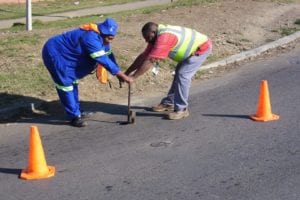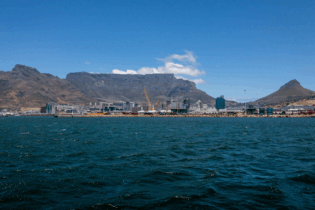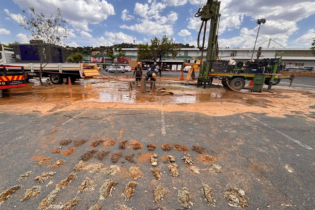The Msunduzi Municipality has made great strides when it comes to saving water over the past year.
Having embraced the Department of Water Affairs’ policy that “Water Is Life”, the Municipality formulated a five-year Water Conservation and Water Demand Management initiative to stem water losses, increase revenue and improve service delivery – with the ultimate objective of reaching the Presidential Directive of halving water losses by 2014. According to Brenden Sivparsad, manager: design and planning, infrastructure services at the Msunduzi Municipality, “At present, we distribute an average of 160 million litres of water to over 600 000 people each day. If we do not optimise the use of the water, we cannot rule out water restrictions and even shortages.”During the first year, the Msunduzi Municipality not only moved ahead with numerous technical interventions, but also focused on non-technical engagements and activities aimed at increasing consumer awareness.
The high impact interventions that began in earnest in February this year include the replacement of aged infrastructure, pipes and water meters, as well as the reduction of water pressure, leak detection and the minimisation of illegal connections. Improvements were almost immediate. Non-revenue water for the 2009/10 financial year was 37%. This dropped by 1.3% within the first few months, equating to a saving of 15 Ml/day. “Because unnecessarily high water pressure increases both the frequency and volume of water leaks, we have introduced 30 state-of-the-art Pressure Reduction Valves (PRVs) to reduce pressure to consumers to 60 m. As a result, we expect to save in excess of 10 mega litres per day, equating to about R13 million,” says Sivparsad. So far, Oribi, Murray Road, Bisley, Hathorns, Symons and Masons reservoir zones have been rezoned and redesigned to comply with the new pressure regime. The PRVs will be installed during 2012. Two advanced controllers have been installed in Townbush Road, which feeds 75% of the CBD. Using GSM Communication signals, these revolutionary devices are constantly updated and adjust the PRVs to ensure that water pressures are kept at optimum levels at all times. Currently, they deliver a saving of 2.2 Ml/day. Savings are expected to equate to R2.65 million by next year when the system has stabilised.
Leak detection and repair is another priority. Level 2 leak detection began in March and a total of 1,791 km of pipes were surveyed. A total of 1 739 visible and non-visible leaks were found, of which 99% were repaired. Level 4 leak detection took place in Symons reservoir zone in the CBD area, where 78.3 km of pipeline was surveyed, 14 leaks were found and 10 were repaired. Special steps are being taken to repair those in difficult positions, such as tarred intersections. This has ended estimated losses of 2.4 Ml per day.
Sivparsad explains, “Our mains replacement programme, which will ultimately replace approximately 30km of pipe across the city, is well underway. This year, pipe replacement in the CBD was prioritised due to the high frequency of bursts because of crumbling infrastructure.” High traffic congestion in the CBD necessitated using sophisticated trenchless technology. A new pipe is forced through the old one, and as it travels along the existing pipe, it cracks it and takes its place. Advantages include cost savings and minimal disruptions, as there is no need for major excavations and road closures. Phase 1 comprises 3.2 kms of which 1.8km has been replaced. The balance will be completed during 2012. Meter maintenance and meter cleaning has also achieved encouraging results during the past 12 months. A year ago, illegal connections and unmetered or unregistered connections accounted for 37% of the city’s water losses. In February 2011, there were 12 589 exception reports. Of these, 5 947 m needed maintenance that included clearing rubble and grass. A total of 6 061 m was inspected and 3 122 m was found to be damaged or not working. To date, 1 157 m has been replaced. Phase 2 of this replacement programme began in early 2012, and by the end of 2013, all faulty meters will have been replaced. “While these interventions form the backbone of the Msunduzi Municipality’s Water Conservation and Water Demand Management initiative, it is only by entrenching a water-saving culture that we can ensure that saving will be sustainable,” says Sivparsad. An awareness programme has been initiated. Teacher Thembeka Jali has visited 28 schools to teach both learners and educators about the need to save water. An hour-long presentation is supported by posters, which are displayed at schools. The aim is for learners to take this message home so that it can be disseminated to whole communities. Feedback from learners indicates that this is happening and that they are using water more responsibly, and even reporting leaks and illegal connections. Although this programme has been put on hold during the summer school holidays, 75 primary and high schools within the Msunduzi Municipality are expected to be reached. Based on research that illustrates that learners retain more information during play, the Msunduzi Municipality created a soccer tournament among 18 schools within the Edendale area late last year to endorse this water conservation learning programme. Winning teams will receive educational material and equipment for their schools.







